The first new-to-me visit on our spring break road trip was Anza-Borrego State Park in the southern California desert. We arrived late in the day on Monday and had just a brief chance to look around. On Tuesday we got up early and went for a hike, trying to avoid some of the midday heat. Fortunately there was a bit of a breeze, which helped with the heat but made flower picture-taking challenging.
Anza-Borrego is located in the Colorado Desert, which is a western subdivision of the Sonoran Desert. The Colorado is a low-altitude desert (most of the surrounding hills are only ~900 meters tall) and thus gets much hotter in the summer than deserts at higher elevations, and very rarely experiences a winter frost. Winter is the main rainy season and some regions also receive rain during a late-summer monsoon season.
After a rainy winter, the desert explodes into vibrant life:
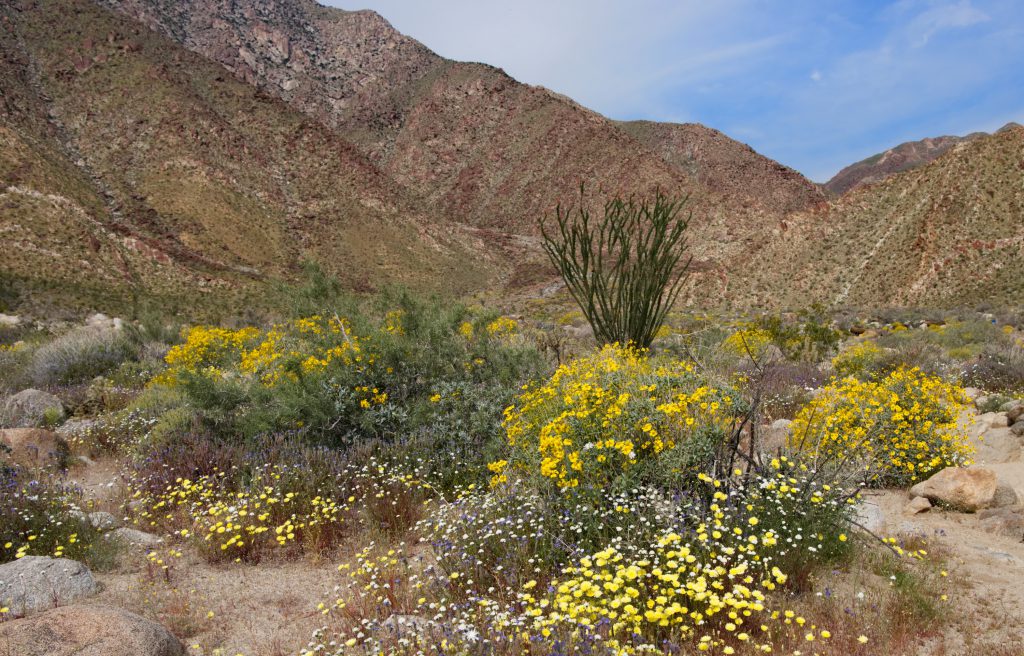
2019-03-26
© Allison J. Gong
The color of the day at Anza-Borrego was yellow. More details on the yellow players in a bit.
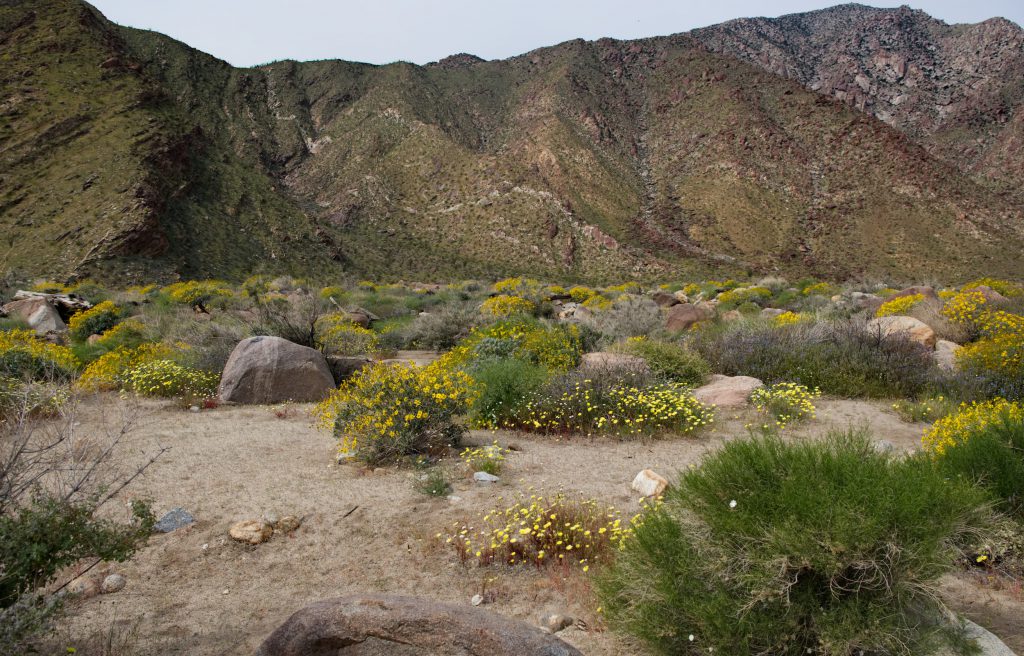
2019-03-26
© Allison J. Gong
It had rained a few days prior to our visit, and there a stream was flowing through the desert.
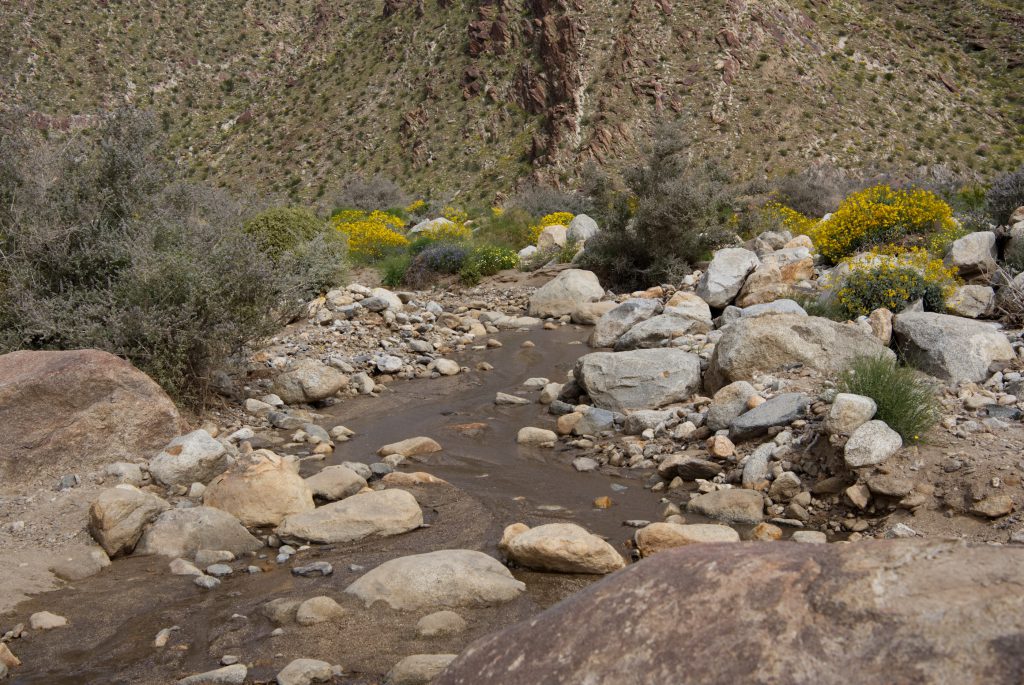
2019-03-26
© Allison J. Gong
This running water would be a temporary situation, of course, but one that is of great help to the wildlife in the park. At the park visitor center I read that wildlife large and small come to drink from the shallow streams, and that if we were to see bighorn sheep approaching the water we should stay out of their way. Water is so scarce for these animals that any delay in getting to it, or any separation of individuals from their family unit could be very stressful. I didn’t know whether or not we’d even see the sheep, since they are shy, but we got lucky!
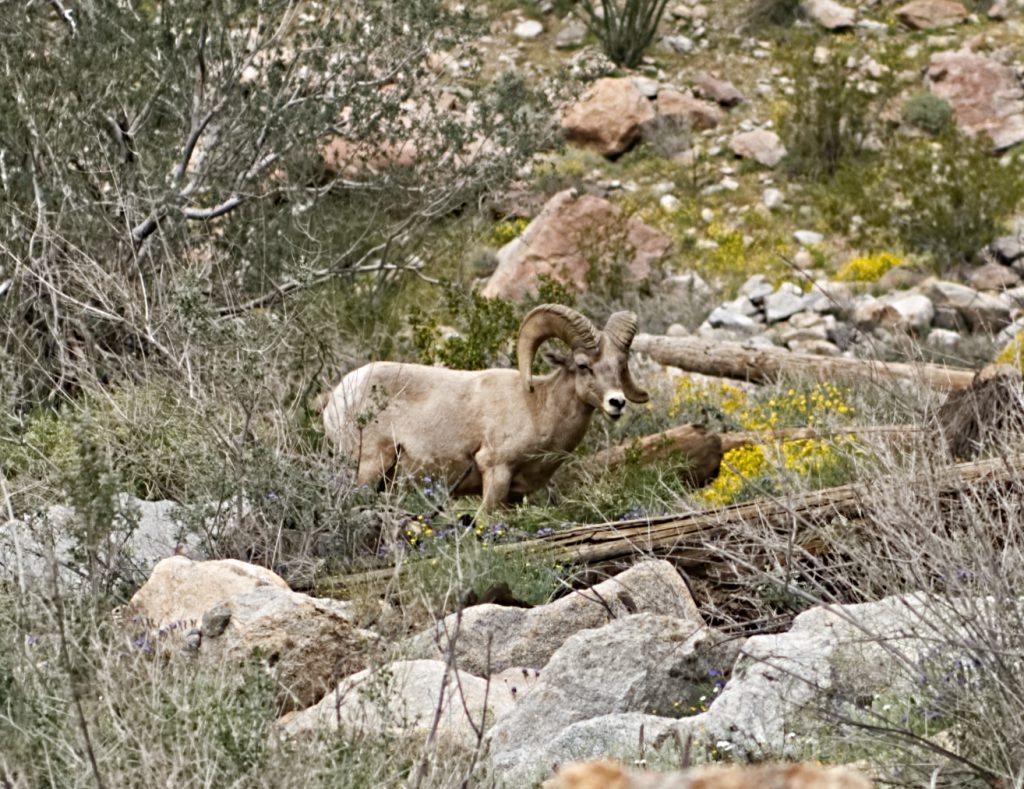
2019-03-26
© Allison J. Gong
Handsome fellow, isn’t he? He was eating and didn’t seem to mind us hikers as long as we stayed on the trail. Of course, there was an idiot who approached too close to get a better photo, and this ram wasn’t happy about it. He withdrew away from us and then went about his business. Other sheep wandered through, too, to forage or drink from the stream. But this big guy gave me the best photo op.
A visit to the desert this spring, after all the rain we had over the winter, was all about the wildflowers. Most of them were new to me. One thing that struck me was that, instead of the carpets of color that we’d seen at Carrizo Plain or Antelope Valley, flowers at Anzo-Borrega were much more widely dispersed. Some species were very common and others I didn’t see more than once or twice.
As I mentioned above, yellow was the predominant color at Anza-Borrego. There were several daisy-like flowers in both yellow and white, and some were very common. Fortunately for me, the visitor center had an easy-to-use pictorial guide of the most common wildflowers; using that, some wildflower field guides that we brought with us, and Calflora.org, I may have identified them all correctly. I’m sure that somebody will point out any identifications that I got wrong.
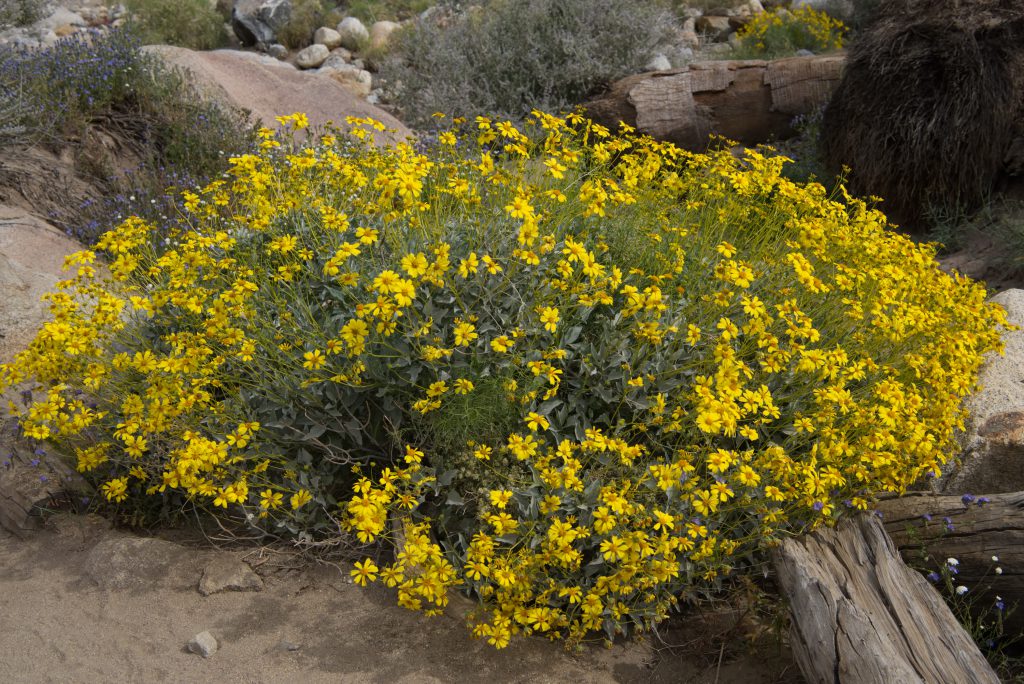
2019-03-26
© Allison J. Gong
One of the defining characteristics of E. farinosa is the way that the blossoms are raised up above the grayish-green foliage. It’s a cool morphology, and makes the plant look very different when you see it from the side. Here’s a shot that shows it:
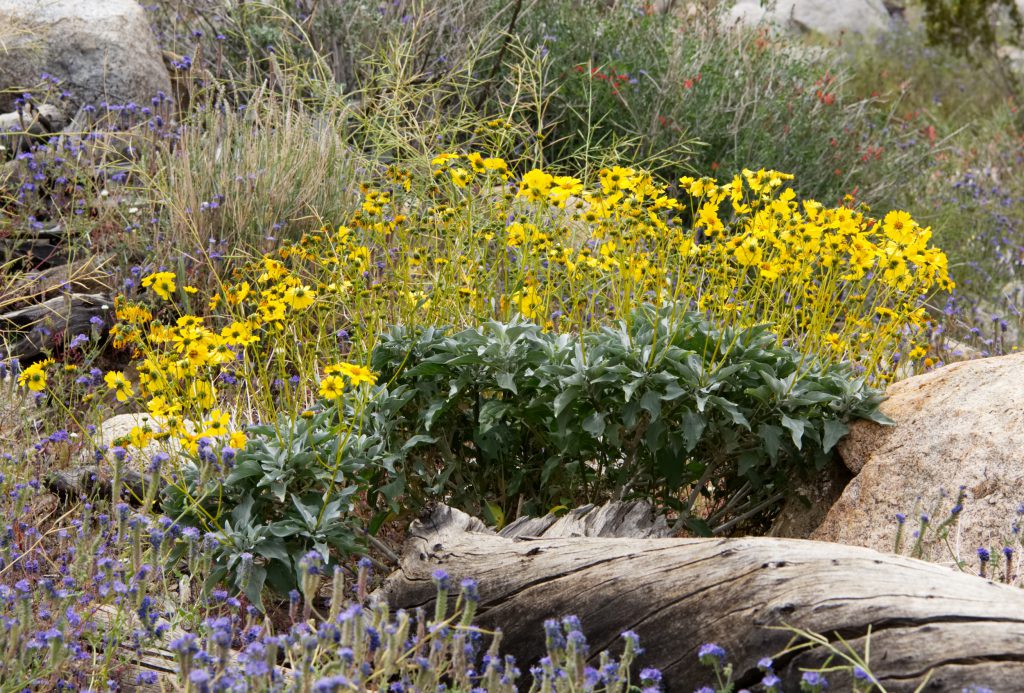
2019-03-26
© Allison J. Gong
And brittlebush was very abundant!
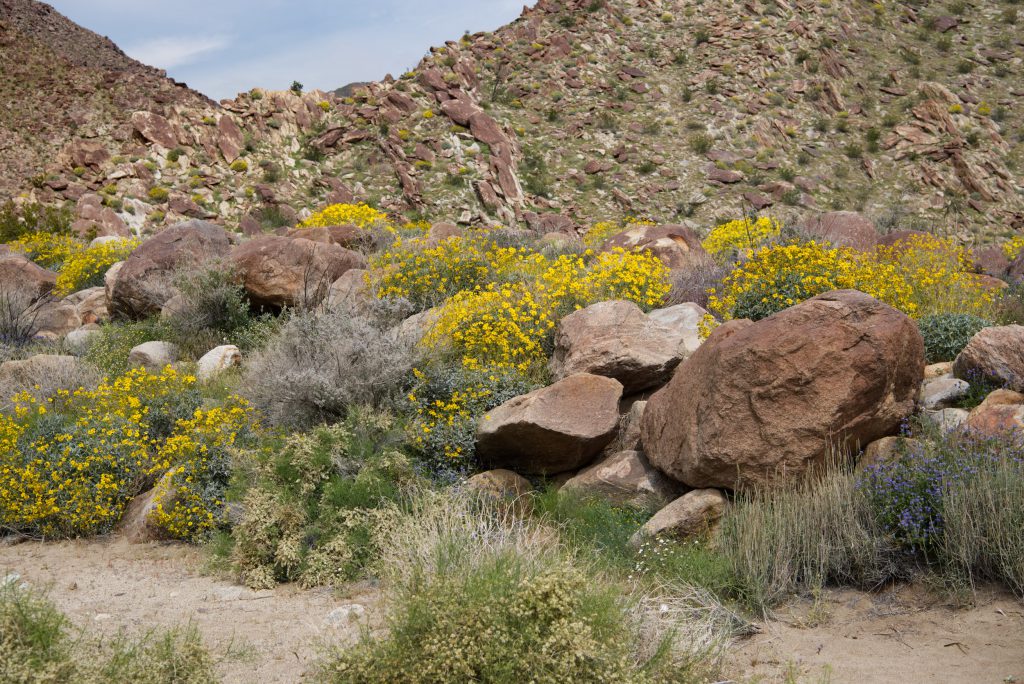
2019-03-26
© Allison J. Gong
Another very abundant yellow flower was the very aptly named desert dandelion, Malacothrix glabrata. It looks like a typical dandelion, perhaps a more pale buttery color than usual, and when mature the blossoms have a small purplish red spot in the center.
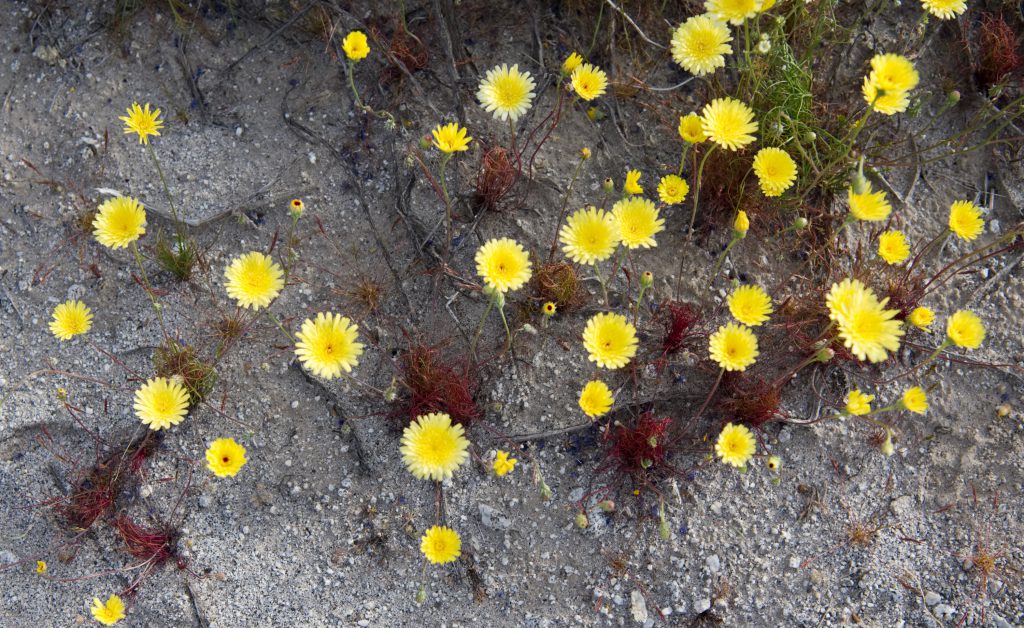
2019-03-26
© Allison J. Gong
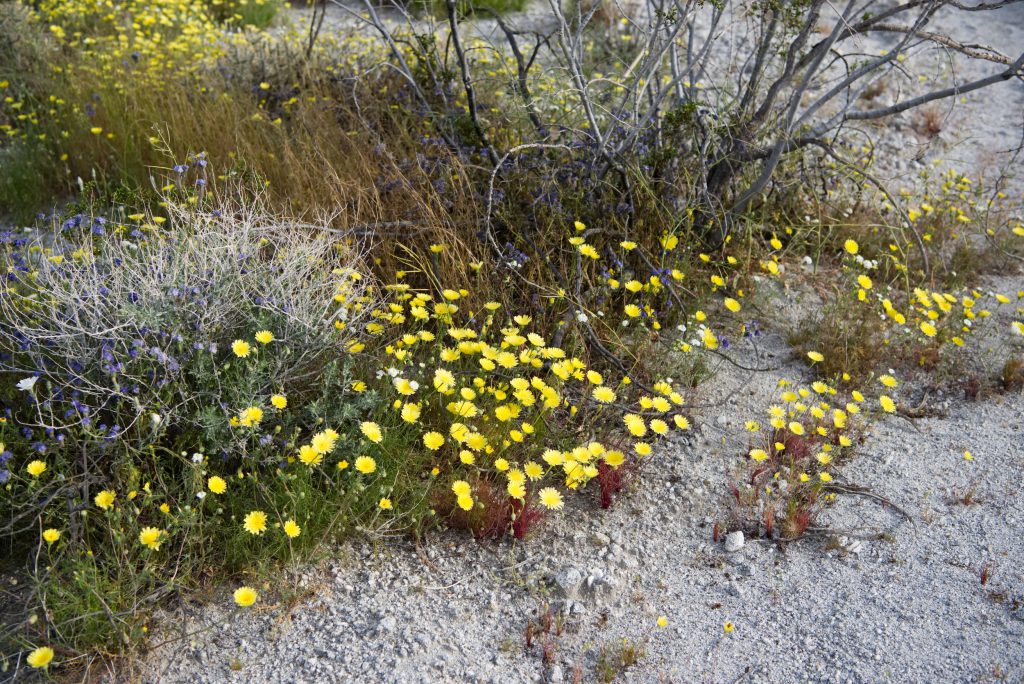
2019-03-26
© Allison J. Gong
Our state flower, Eschscholzia californica, is typically a brilliant pure orange color, although sometimes the color can be more yellow. In Anza-Borrego I saw some plants whose foliage looked poppy-ish, but the blossoms didn’t look quite right–a little too small to be California poppies and a color that was definitely yellow rather than orange. Turns out, though, that they were gold poppies (E. parishii)!
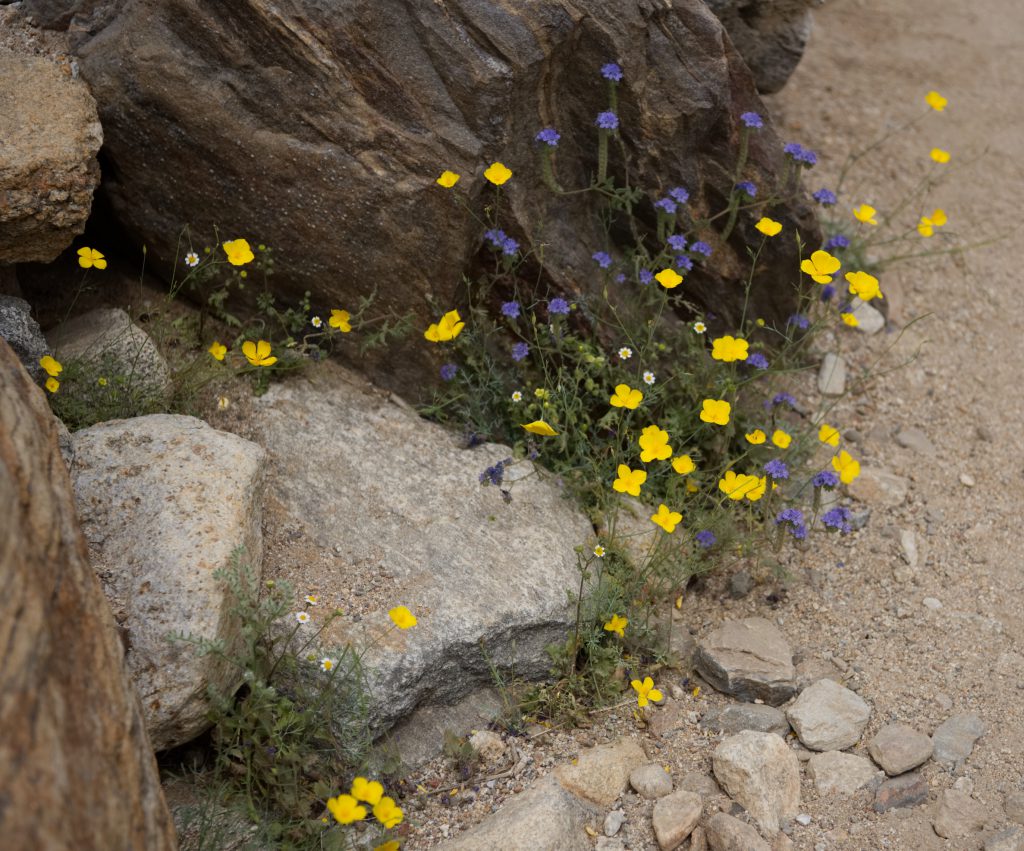
2019-03-26
© Allison J. Gong
And who can resist a plant called ghostflower? That palest of yellows, almost but not quite white, combined with the tiny dark speckles, makes the plant seem very quiet–indeed, almost spooky. Ghostflower is easily overlooked, compared to the vibrant yellows of brittlebush, poppies, and dandelions.
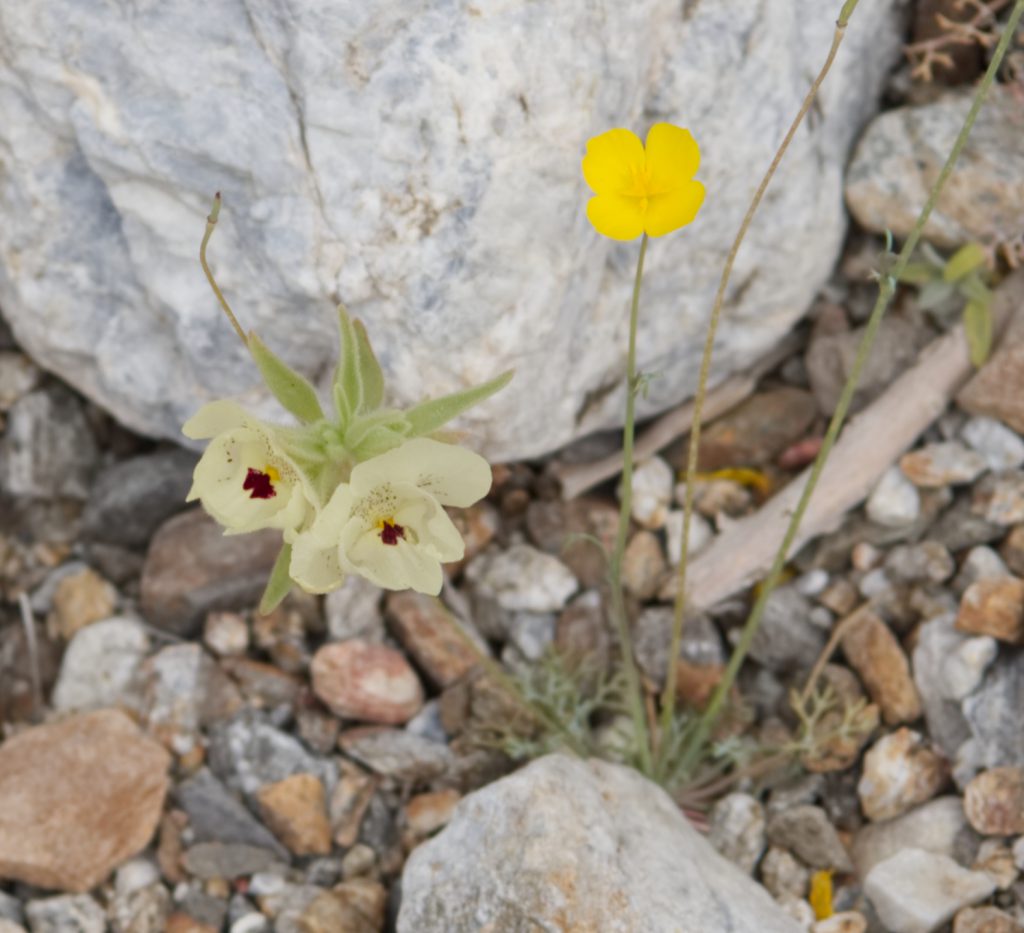
2019-03-26
© Allison J. Gong
One of my favorite flower color combinations is yellow, white, and purple. Imagine how pleased I was to find it in the desert!
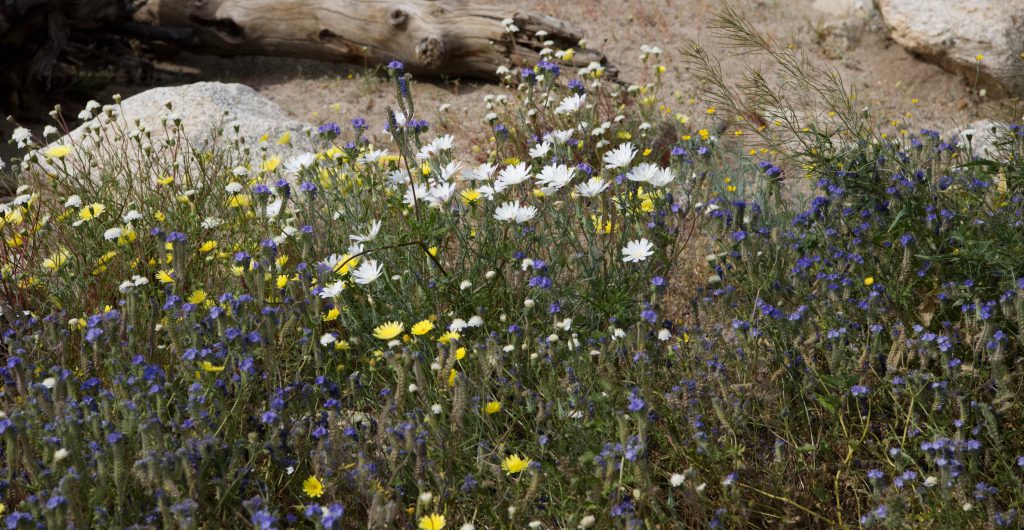
2019-03-26
© Allison J. Gong
The color purple was represented by two species of Phacelia, P. distans and P. campanularia. Phacelia distans was by far the most common in the floors of the valleys, and we saw P. campanularia at higher elevations.
This is Phacelia distans. Note the shape of the inflorescences, and how the blossoms are arranged.
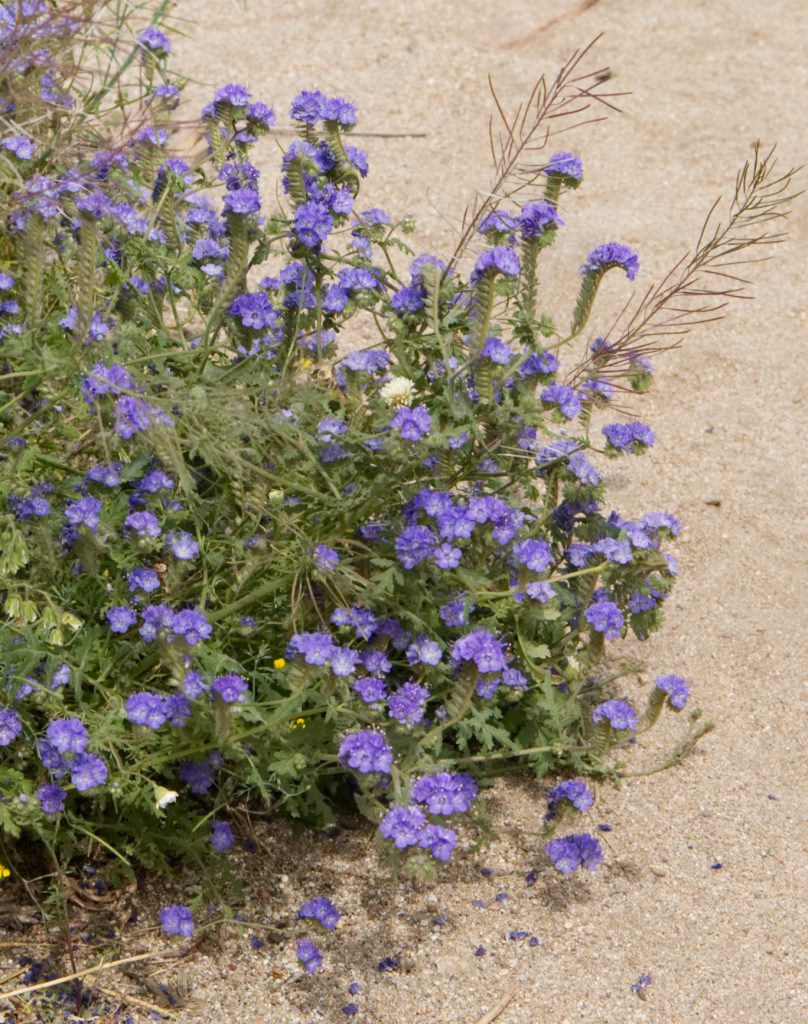
2019-02-36
© Allison J. Gong
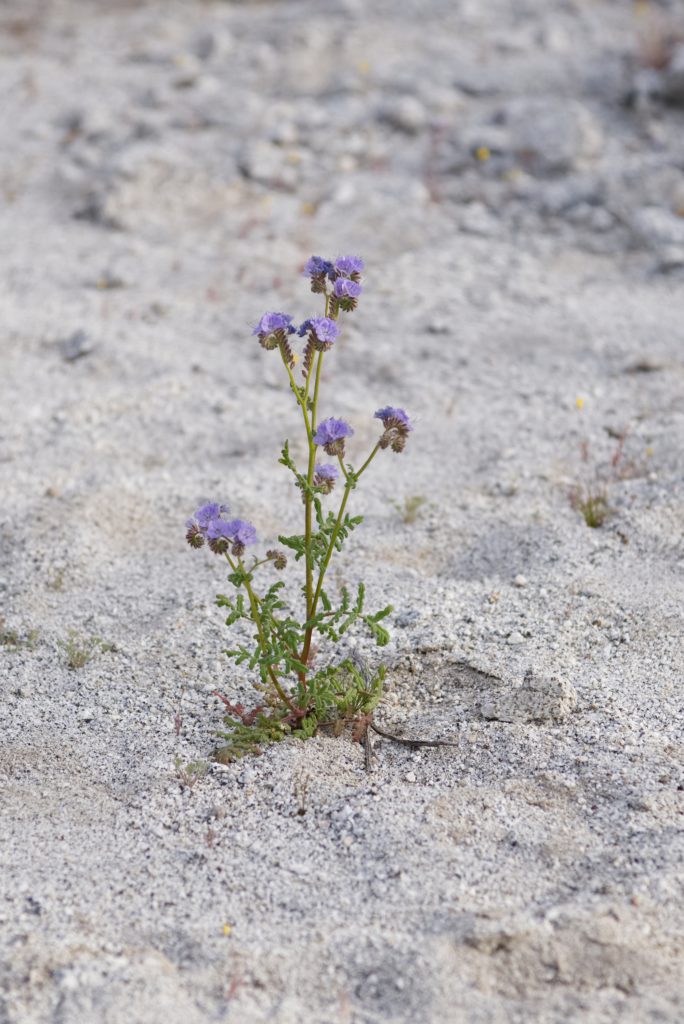
2019-02-36
© Allison J. Gong
And this is Phacelia campanularia, the desert bluebell:
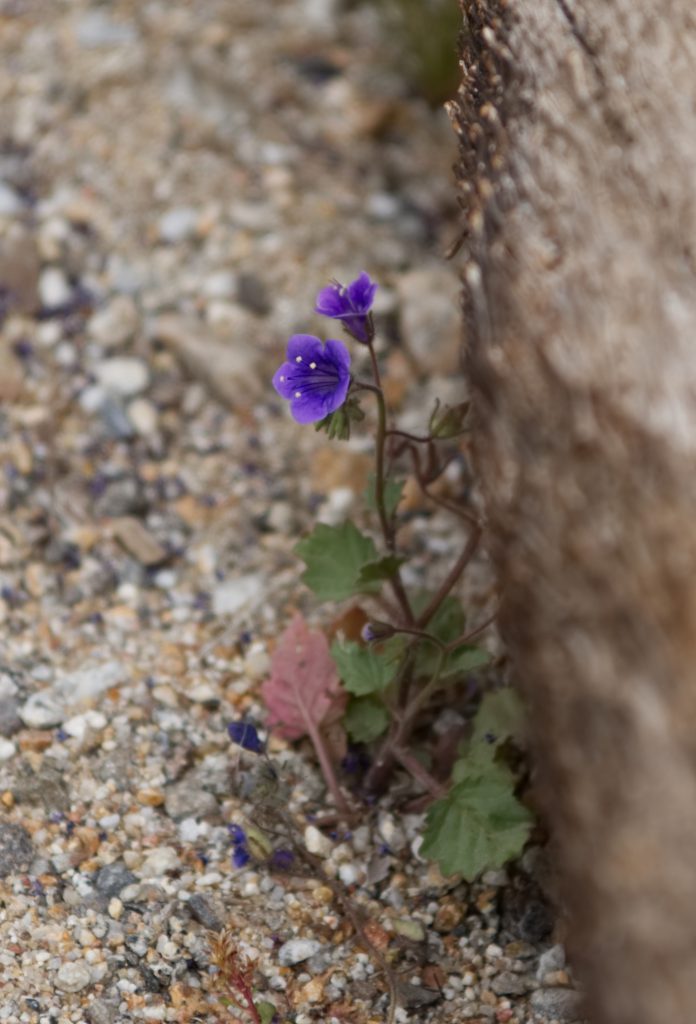
2019-02-36
© Allison J. Gong
These plants have the same blossom shape, but very different blossom arrangements and foliage morphology. Nifty, the differences between presumably closely related species, eh?
Another flower in the purple family was the desert sand verbena (Abronia villosa). It occurred in sandy soils, often in washes or dunes, similar to the sand verbena that I see on beaches along the coast.
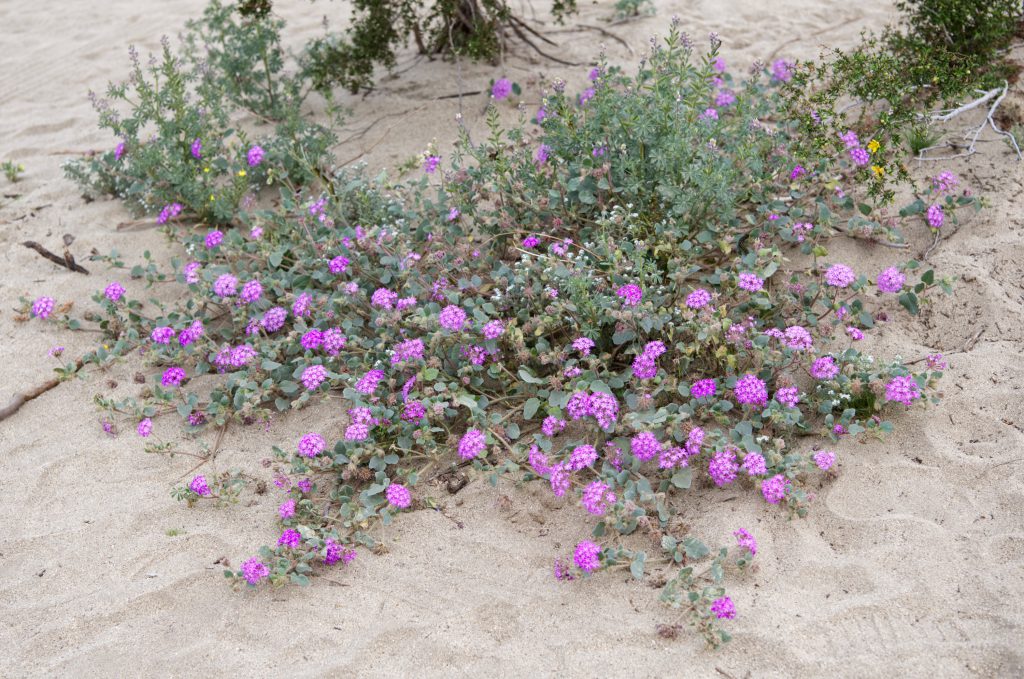
2019-03-26
© Allison J. Gong
The pink color family was represented by the bright pink Bigelow’s monkeyflower, Diplacus bigelovii. They were fun. The golden-orange throat is the diagnostic feature for this species.

2019-03-26
© Allison J. Gong
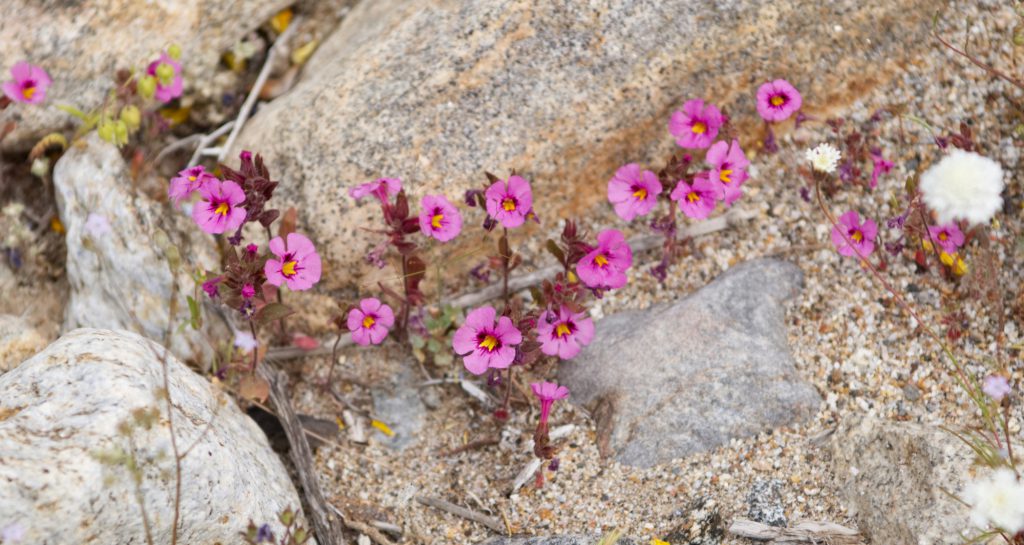
2019-03-26
© Allison J. Gong
I didn’t get very many good pictures of the white flowers. It always seemed to be especially windy when we saw them. Desert chicory (Rafinesquia neomexicana) is a white daisy-like flower.
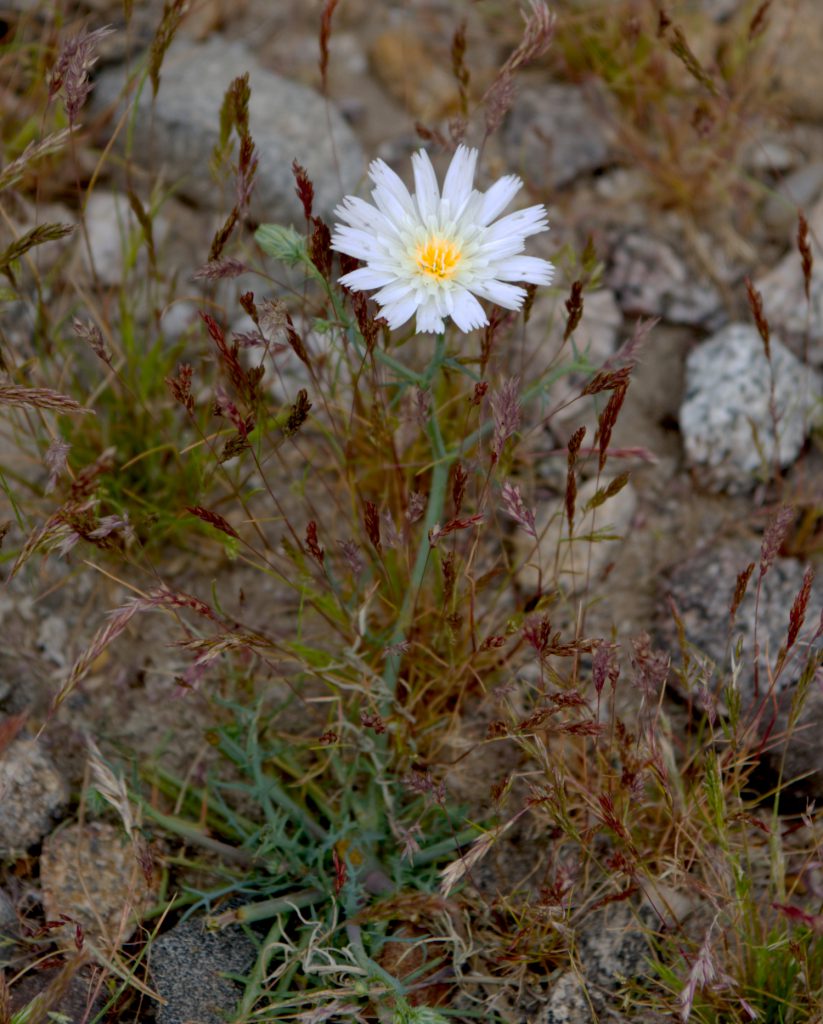
2019-03-26
© Allison J. Gong
This being the desert, much of the plant biomass was succulent in nature. The ocotillo were blooming, as were the teddybear cholla and other cactuses.
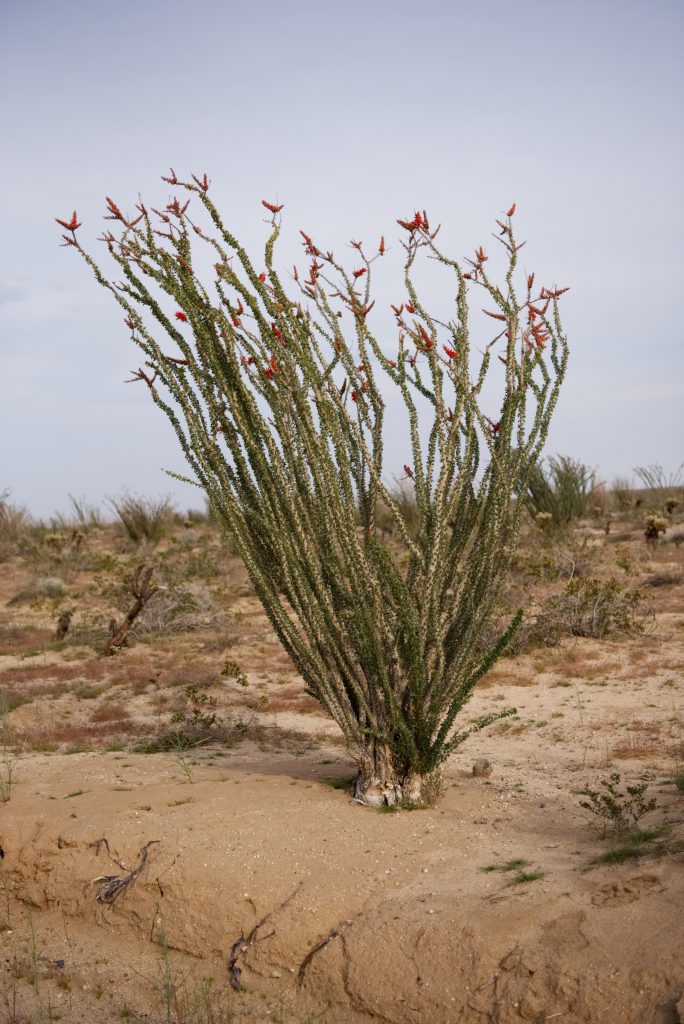
2019-03-26
© Allison J. Gong
Everything living in the desert survives only if it can take advantage of the minimal precipitation that falls every year. Cactuses must suck up as much water as they can during the wet season, and store it for use during the hot, dry summer. Barrel cactus (Ferocactus acanthodes) this spring are fat, like the barrels for which they are named, and full of water. Their bodies are pleated longitudinally, allowing them to swell up when water is available. Then, as their water stores are depleted during the summer, the pleats fold together and the body becomes more compact. The large saguaro cactuses in the Sonoran Desert do the same thing.
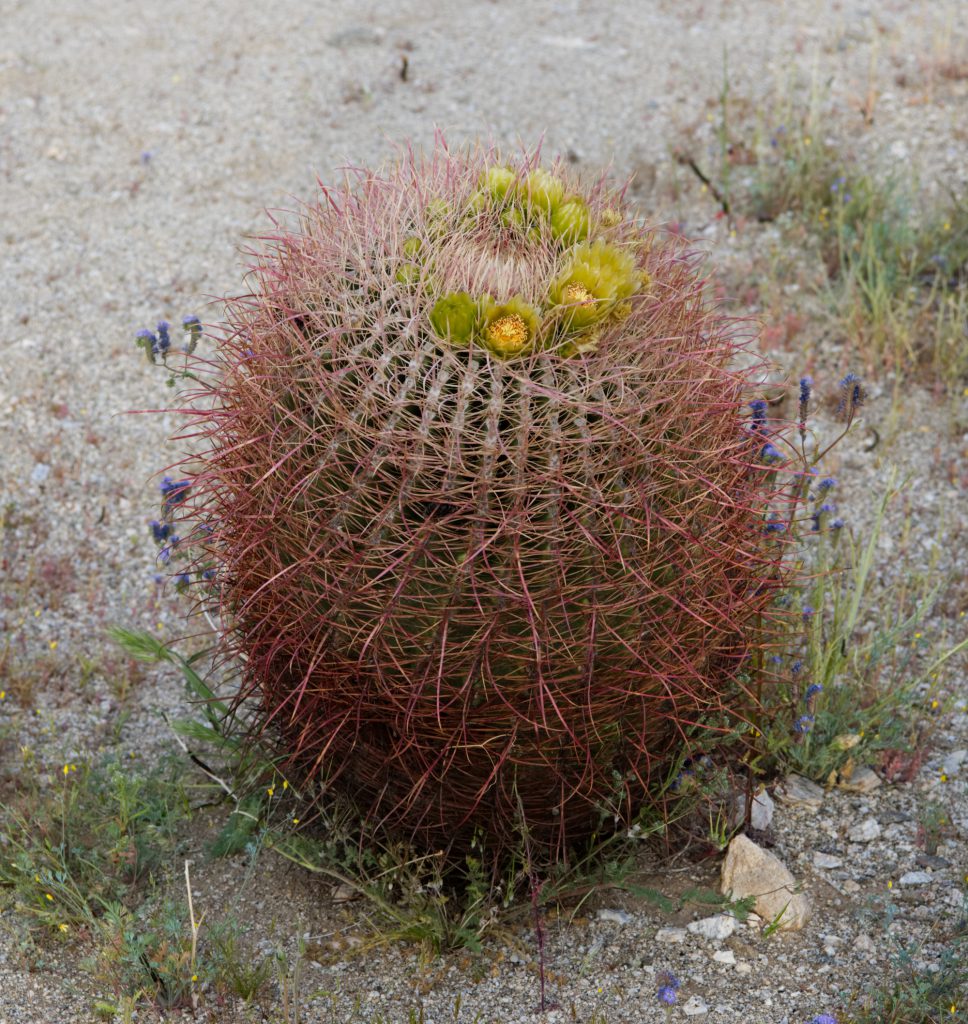
2019-03-26
© Allison J. Gong
A cactus whose blossom definitely belongs in the pink category is the beavertail cactus (Opuntia basilaria). I think it was early in the blooming season for them, as I never saw any plants with more than a few open flowers, but most of them had many buds developing.
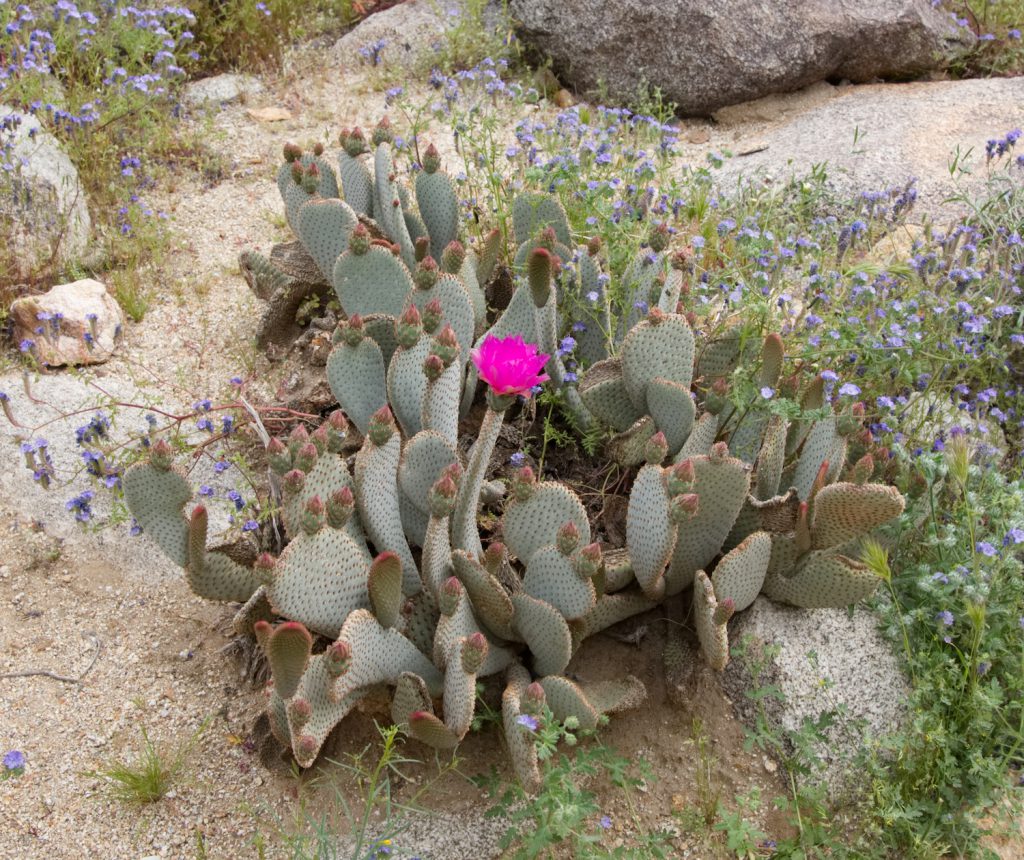
2019-03-26
© Allison J. Gong
The chollas are cactuses in the genus Cylindropuntia, characterized by cylindrical stems. The teddybear cholla (C. bigelovii) was the one we saw at Anza-Borrego. It has dense spines that give it a fuzzy look but in reality form an impenetrable defense–it manages to say “I’m cute and fuzzy!” and “Don’t touch me!” at the same time.
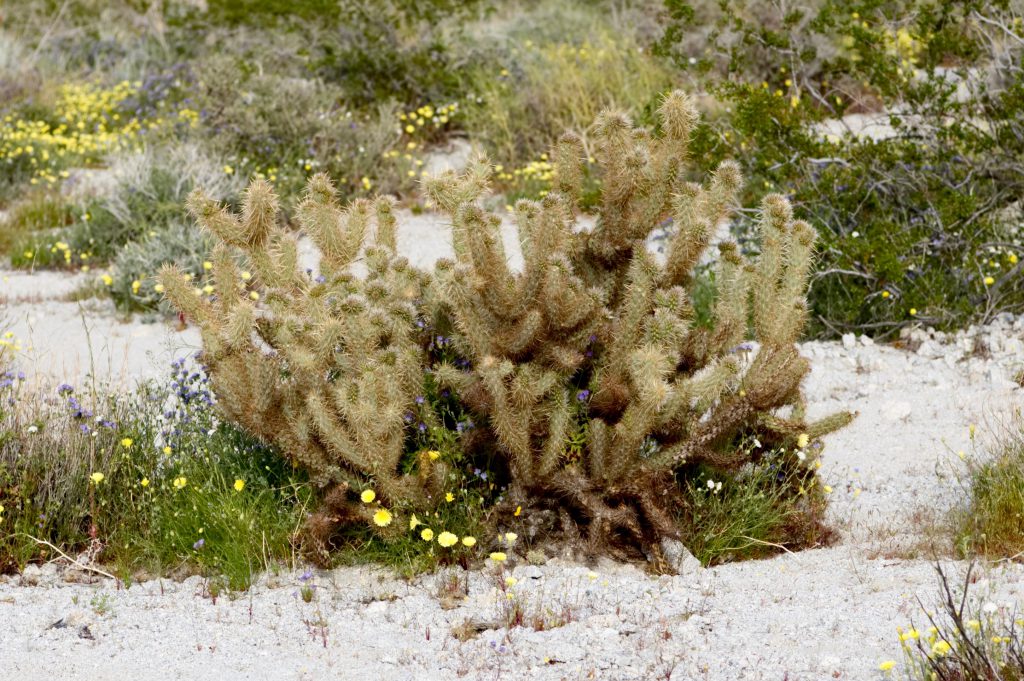
2019-03-26
© Allison J. Gong
The teddybear chollas were very abundant at Anza-Borrego. We continued to see them as we continued on our trip. Next stop, Joshua Tree!
